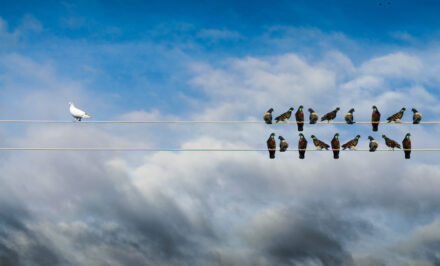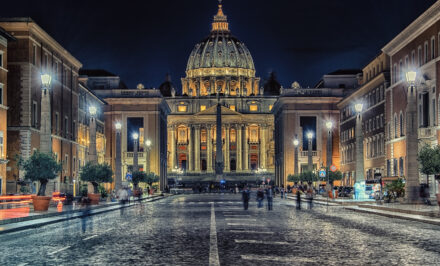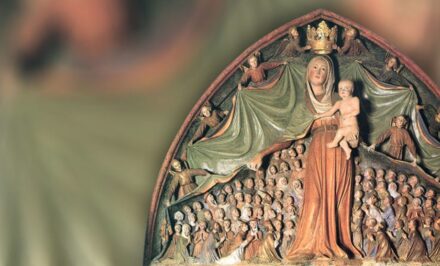 Fr. Alberto Eronti. In 1912, when Father Kentenich was named Spiritual Director of the Pallottine Minor Seminary, he assumed the position fully aware of his task as an educator, not only as a professor of Latin, but as an educator in charge of the formation of youths. His pedagogical proposal – to state it thus – was centered on what we can call his “program:” “Under the protection of Mary, we want to learn to educate ourselves…”
Fr. Alberto Eronti. In 1912, when Father Kentenich was named Spiritual Director of the Pallottine Minor Seminary, he assumed the position fully aware of his task as an educator, not only as a professor of Latin, but as an educator in charge of the formation of youths. His pedagogical proposal – to state it thus – was centered on what we can call his “program:” “Under the protection of Mary, we want to learn to educate ourselves…”
Two accents must be stressed:
Under the protection of Mary.
We want to learn to educate ourselves.
From the beginning, it was clear to Father Kentenich that it does not deal with education which only “receives,” but that it tries to have an Educatress (vertical dimension), a pupil who takes the lead in his formation and a community (horizontal dimensions). For him, education is self-education and an apprenticeship within a community. From this aspect, his goal being: “the new man in the new community.” Man is born in a community and is made in a community.
With the “program” clear, Father was searching for something more. Something was tossing and turning in his heart and in his mind. This made him attentive like one who observes the horizon, searching for a sign. This arrives in the fall of 1914, through a magazine which falls into his hands; it contained an article with the history of the Shrine in Pompei in Italy. Father narrates it thus: “Spontaneously, the question immediately arose in me: Could something similar not take place here?” Behold here how Father interpreted and united his ability as an educator and the need to educate with “the power from above” (LK 1, 35).
The history of the Shrine in Pompei was the way in which God indicated to our Founder the road to follow. Speaking of this experience, he would say that on that day a door was not opened to him, only “a crack.” The article echoed in his interior and Father made from the providential experience an act of “practical faith.” This is the origin of what the Shrine and the Schoenstatt Family are today.
God’s action is impressive. The little chapel in the valley was abandoned for religious practice. It had become a shed for various things. Small in size, abandoned and dirty, the small edifice was a “nothing.” Father will interpret the meaning of that enormous poverty: “How often, in the history of the world, has the small and insignificant been the origin of something great and even greater.”
What we know in Schoenstatt as “the law of the creative resultant,” has demonstrated that the interpretation made by Father was correct. Not only correct, but that the same “creative resultant” led the Father of the Family to speak about the “true divine irruption” in Schoenstatt’s origin. He would say that this was possible by practical faith in Divine Providence. This experience was decisive in the life of the Father and Founder. This practical faith was for him the compass for all his decisions and options. It is as if he would say to us: “once you have the certainty of God’s irruption, all that follows must be the consequence of that fundamental experience.”
Father will try to leave absolutely clear what he understands by practical faith in Divine Providence. In 1963, in Milwaukee, he explains it thus:
“Look (…..), for the feminine mentality, the topic of Divine Providence acquires another nuance of meaning other than what we usually give it. Keep it in mind. When people today practice faith in Divine Providence, it is usually done passively. How have we always considered faith in Divine Providence? We have a masculine conception of faith in Divine Providence, a notion that it is part of a masculine spirituality (…..) faith in Divine Providence proposes tasks to us. Not only the task of saying “yes” and remaining silent, but the other task: God has communicated something to us through faith in Divine Providence (…..) Therefore, it is about a faith in Divine Providence that not only detects God’s plans, but also fulfills them. There are tasks to complete!”
Just as every male who needs to develop himself fully needs the complement of the feminine, the female also needs the complement of the masculine. It belongs more to the male than to the female “to do, to make.” Father Kentenich refers to this when he stresses the “masculine” tone of practical faith in Divine Providence. “Practical” means to do, to make, to fulfill, to imagine with God.
If it is true that regarding “masculine faith” is not a generalization (there are females who did unimaginable things), it is true that it is about a more typical reality of the male; therefore, Father finishes his thought saying:
“Our faith in Divine Providence is entirely masculine; an active faith, not passive. It is not a faith which simply endures and bears, but which also (…..) entrusts to us the work to fulfill the task which has been discovered in the light of faith.”
Applying this law to the Shrine, we confirm that when Father’s search arrived at his goal, decidedly “he dived into the water.” It was only a “crack,” it was not total proof, but it was enough for that “crack” to make him decide to act. Because of this he would affirm that “Schoenstatt is a child of practical faith in Divine Providence.”
In this year which we call “of the Shrine,” we want to begin by meditating on its providential origin. By practical faith, God gave us a “beautiful place,” a place of grace, a place where we have the certainty that Mary is there, that She is active. She is there for us and She acts in us. To perceive clearly this being there and acting, we should train ourselves in and for practical faith in Divine Providence. This is the experience which changes life and leads us to say with Jacob: “God is here and I did not know it.” Yes, Mary is in the Shrine, we know it, but we must experience her presence, her activity and her care. This is how Shrine and practical faith will unite, our life will be a place of encounter. We will experience the sheltering, the transformation and the need to live in and from the Shrine.
A very blessed October 18th
Source: Magazine of the Mothers’ Branch, Argentina













